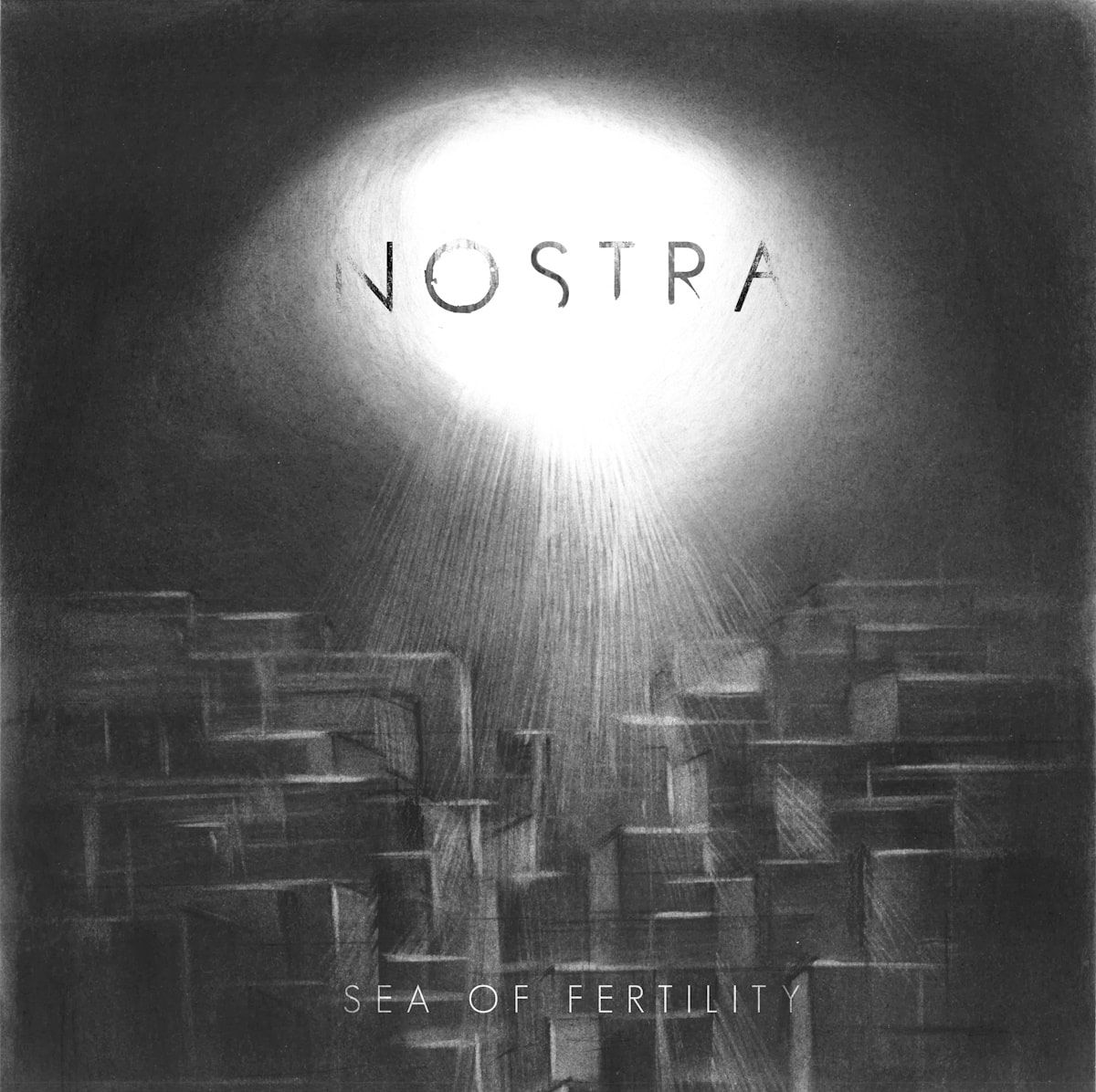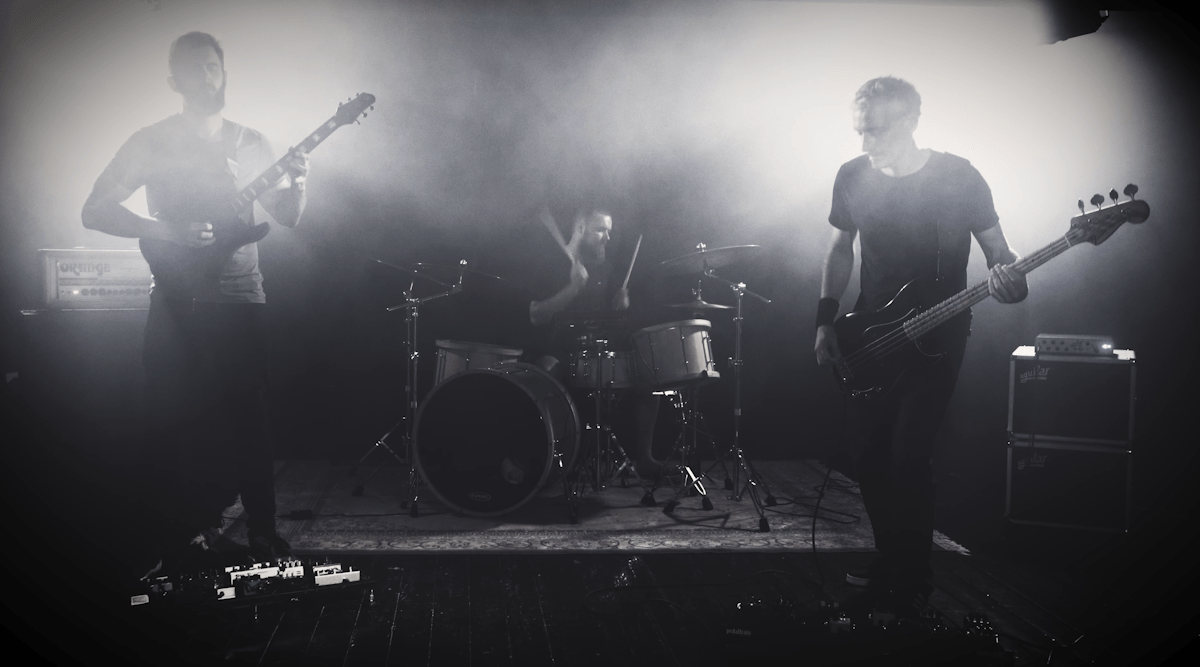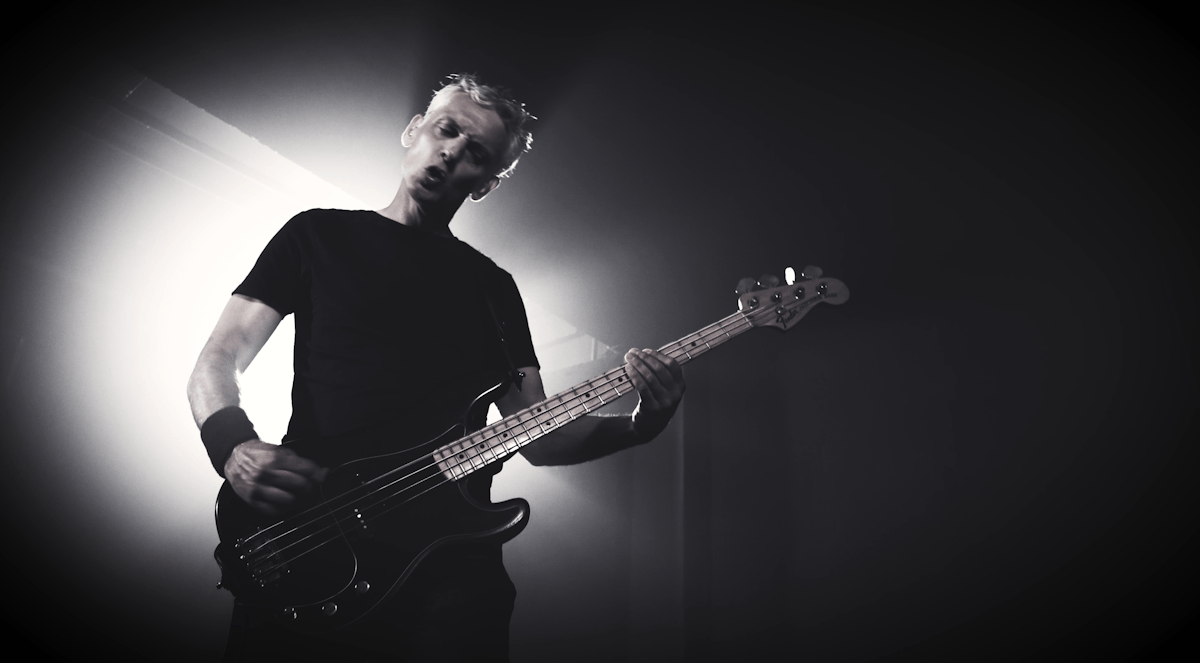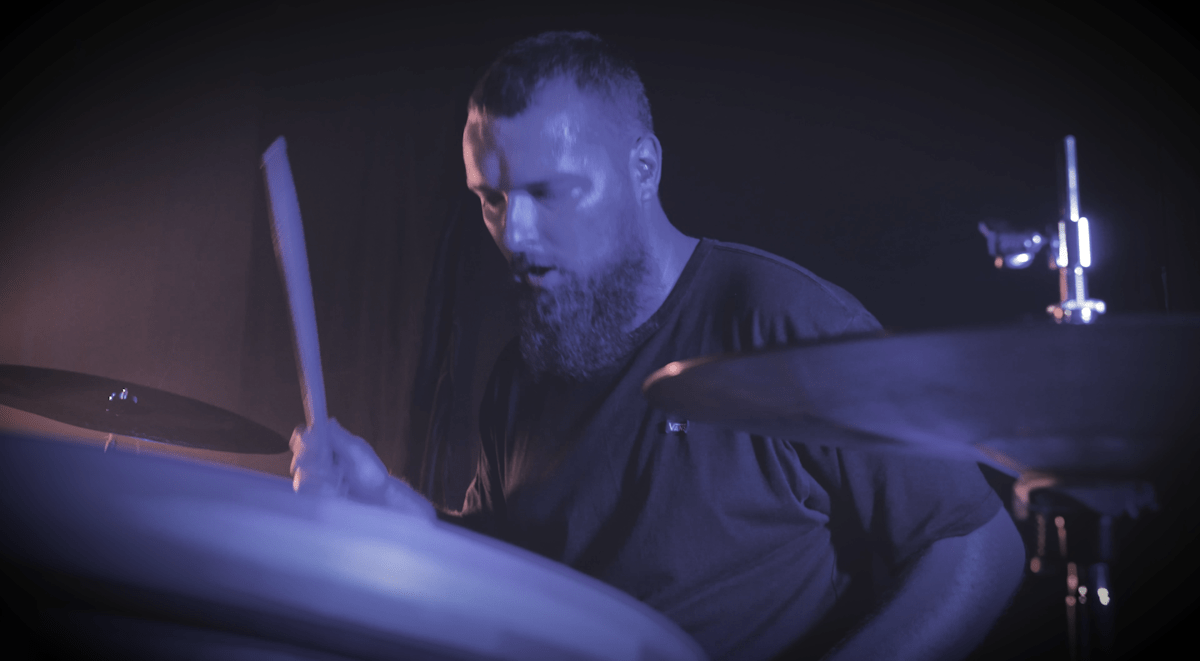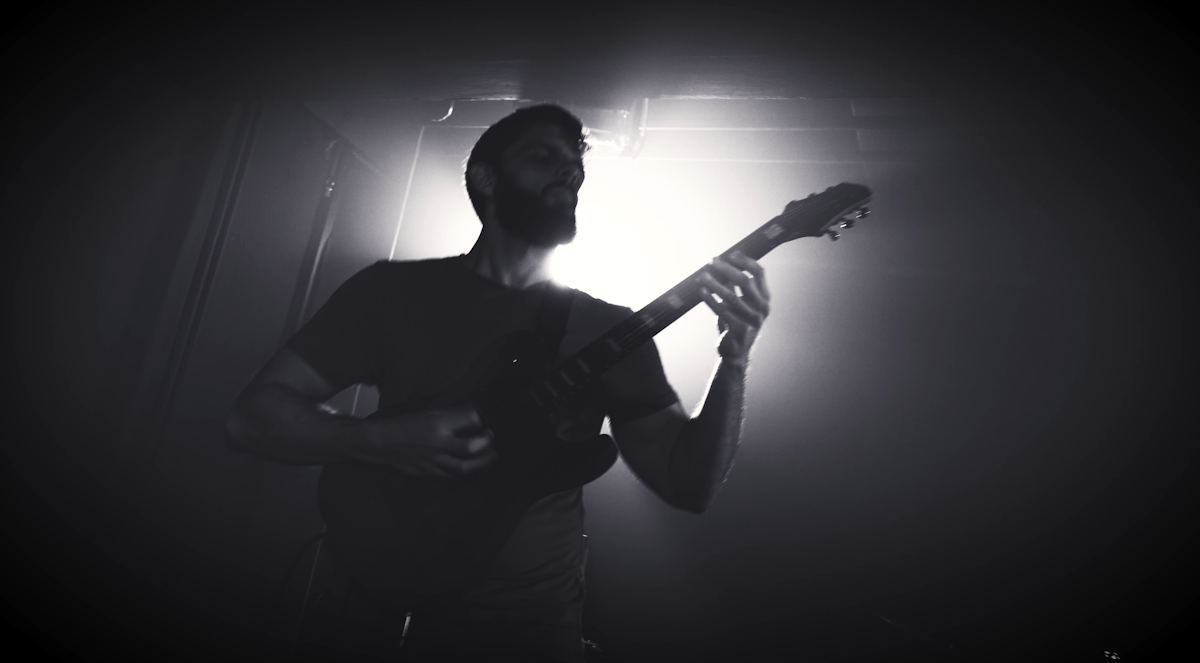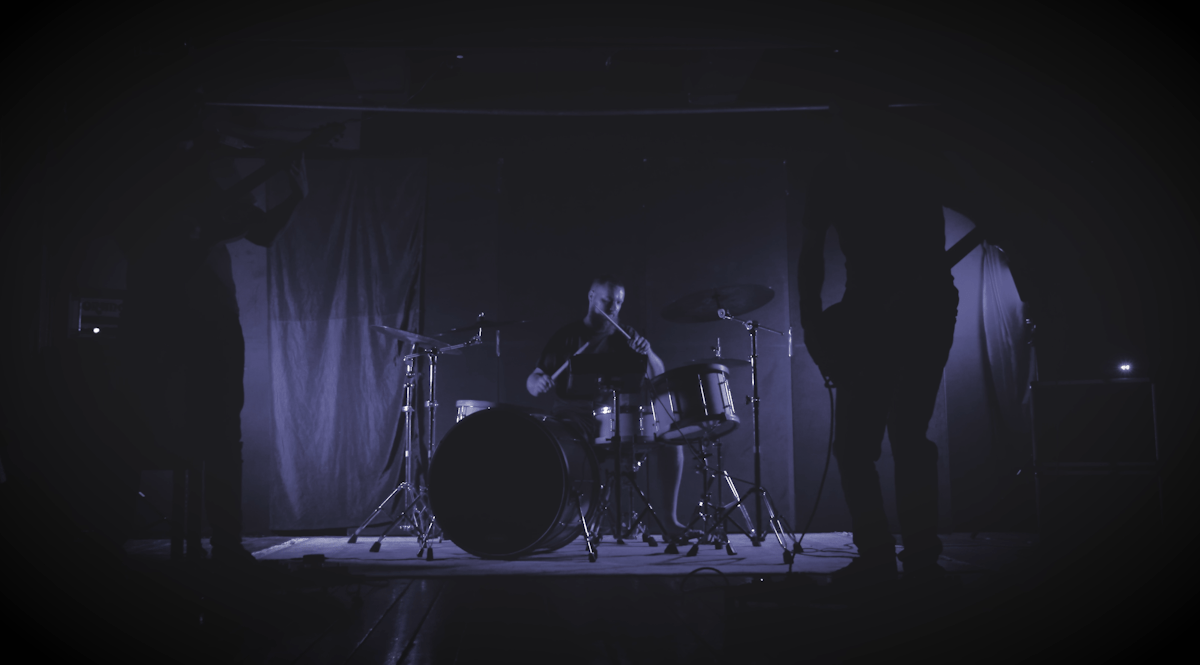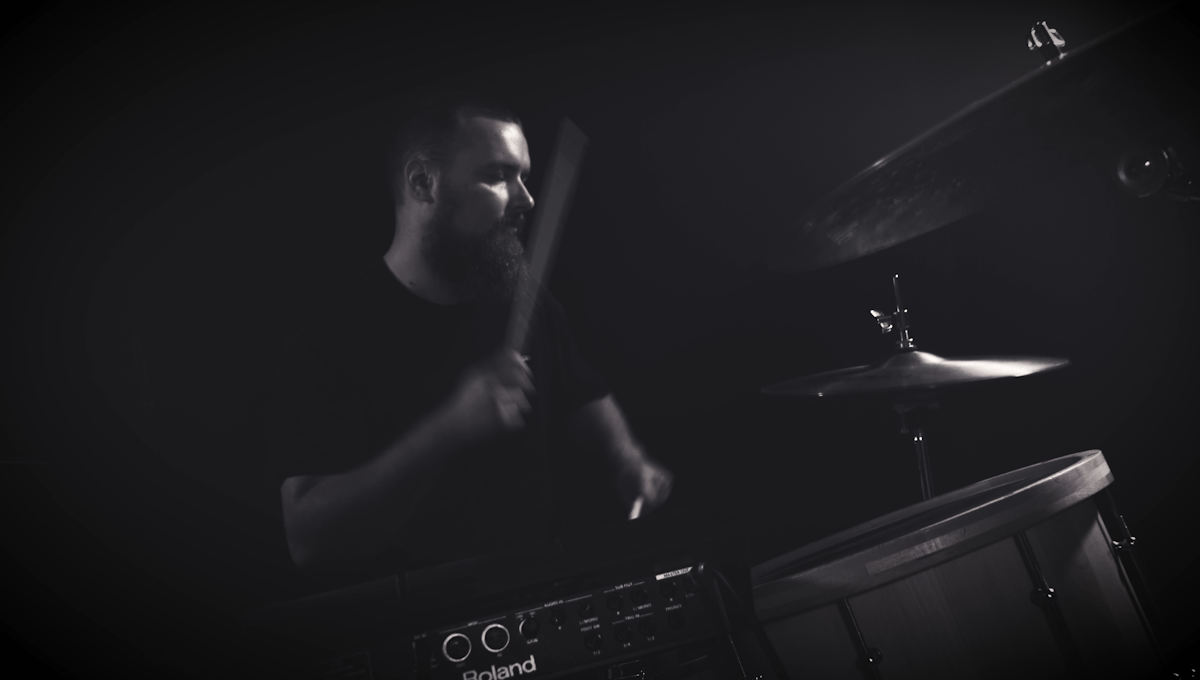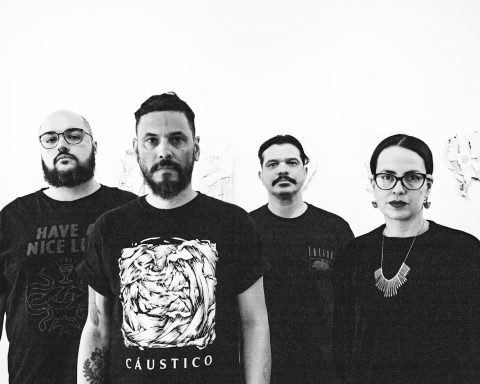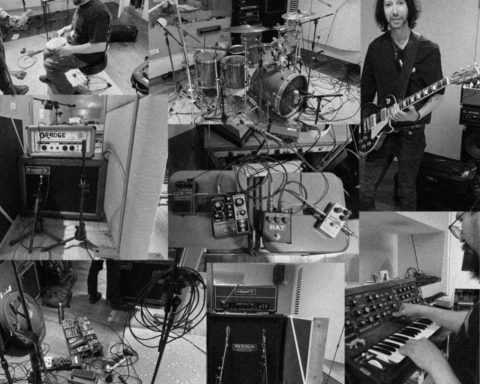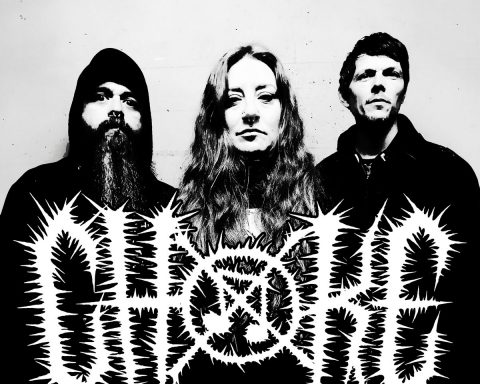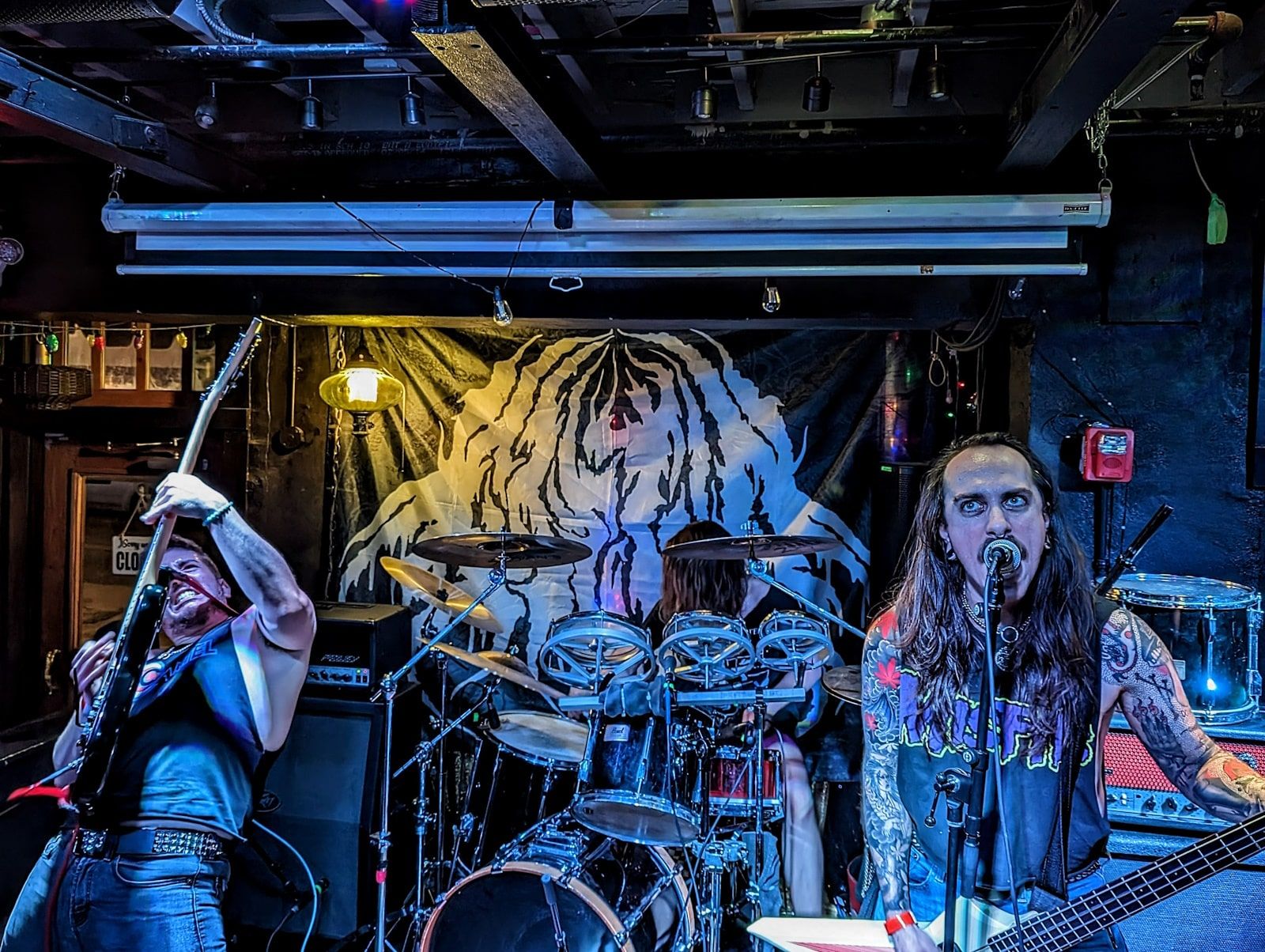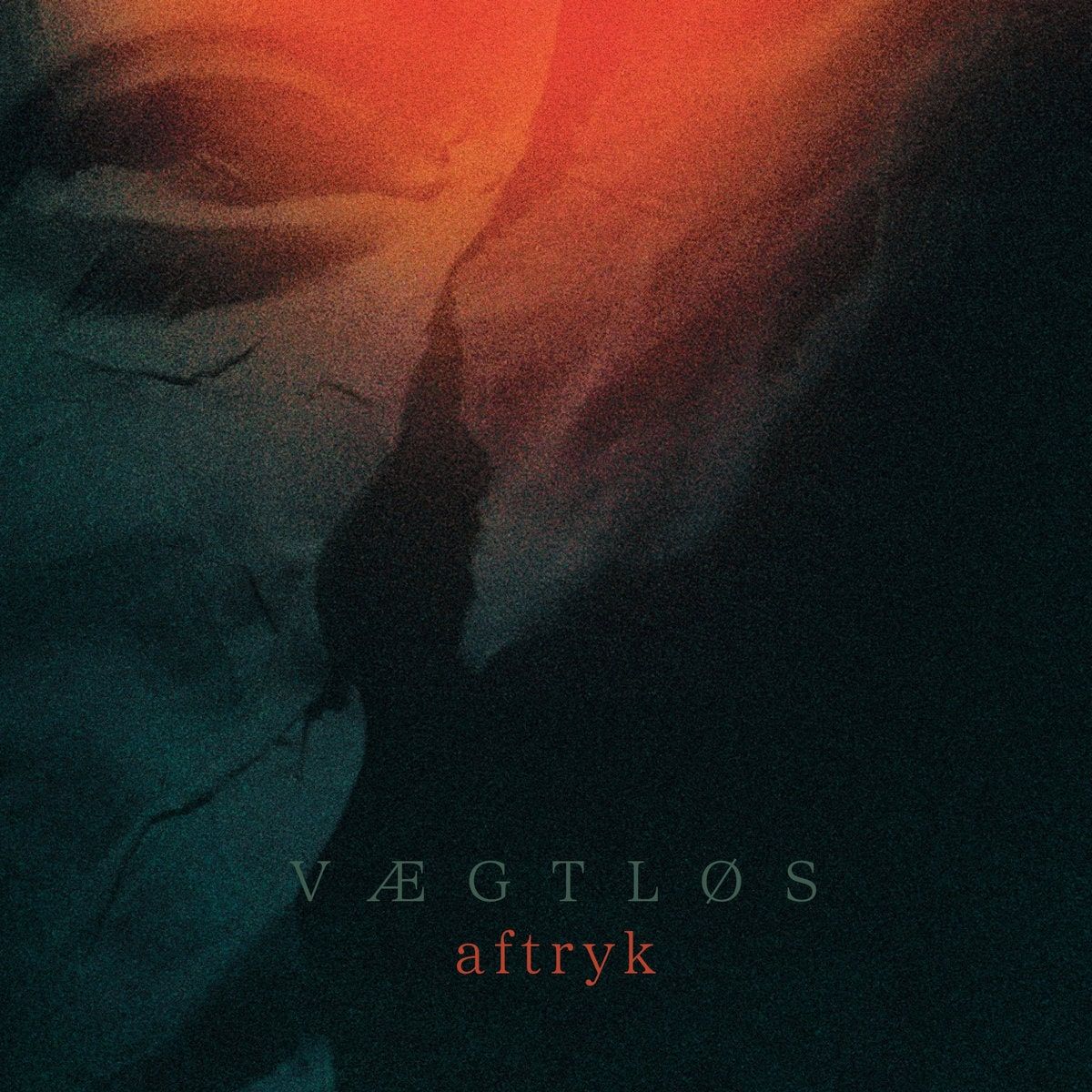In the labyrinthine world of post-rock and post-metal, Nostra emerges as a trio that deftly navigates through the shadows and silhouettes of their genre. Their latest offering, “Sea of Fertility,” released on October 14, 2023, isn’t just another album—it’s a journey through the crevices of the human psyche, set against a backdrop of existential metaphor and introspection.
Recorded in Riga at Gateris Studio and mastered in Montreal at Grey Market Mastering (Godspeed You! Black Emperor Silver Mt. Zion, Wolf Parade, Tindersticks), the album is a testament to Nostra’s dedication to crafting a sound that’s as vast and unforgiving as the lunar landscape it draws inspiration from.
The title, a nod to Yukio Mishima’s tetralogy, hints at the fleeting nature of existence. As Xavier Landes, the bassist, points out, the album initially intended to echo Japanese culture, but evolved into a more profound exploration of life’s inherent void.
The album unfolds like a series of vignettes, each track a story in itself. “Delta,” for instance, rumbles with the accumulated frustrations of recent years, its aggressive bass tone a product of innovative recording techniques. “Holatchahl” paints a chilling picture of the Dyatlov Pass Incident, with its cold guitar tones and an unexpected ‘evil disco riff’ at the end, a jarring juxtaposition that mirrors the tragic and mysterious nature of the event.
Nostra doesn’t shy away from darker themes. “Schwarzkünstler” is a playful yet sinister homage to black metal, while “Mantis” reflects on nature’s adaptability in an ever-changing world. The track “Low Hills and Deep Valleys” addresses mental health, capturing the fluctuating highs and lows with a musical landscape that’s as varied as the emotions it explores.
The album’s narrative arc takes a philosophical turn with “Without Turn,” delving into the inevitability of fate, before culminating in “The King in Yellow.” This track, initially an exploration of a fictional horror, has gained new relevance against the backdrop of current global events, symbolizing the madness and obsession of those in power.
“Pristine” concludes the album on a contemplative note, representing the relentless march of time amidst life’s chaos. It’s a fitting end to an album that doesn’t just resonate musically but philosophically as well.
In essence, “Sea of Fertility” is a contemplative odyssey that challenges listeners to confront the profound and often unsettling realities of existence. Through their intricate compositions and thematic depth, Nostra doesn’t just play music; they narrate the human condition.
Dive into our full track by track commentary below.
DELTA
Delta was the second-released single after Holatchahl. It came out with the first video clip the band ever shot. Harijs pointed out that the name is inspired by the hydrological formation in a river – the area where the water flow creates a triangular shape of accumulated material when entering an ocean or desert.
Without being a reference to the COVID, Harijs explained that “the song for us seems to carry this accumulated weight with it and expresses the frustrations that we have had to deal with in the past years – both individually and as a society.”
The bass guitar stands out. “Credit is due to Jānis, Xavier added. It is one of the many examples of his contribution to the record. He came up with this idea of blending different signals: out of the pedalboard through a cab simulator, captured by mics in front of the cabinets, and processed by a Tech21 VT (mostly for the distorted high frequencies).
The result is an aggressive tone, with a present low end.”
HOLATCHAHL
The name literally means “dead mountain” in Mansi. That is Nostra’s interpretation of the Dyatlov Pass Incident in which nine Soviet hikers lost their lives in 1953. The band underscored that they approached composition in the same ‘cinematic vibe’ as for Ida Knew It on their first EP, Transmission(s) (2018).
Harijs attempted to create the absolutely coldest sounding guitar tone for the intro in order to capture the frozen immensity of the Ural Mountains during wintertime: “eventually we ended up blending several guitar takes, some of which carry the atmosphere, and some – the articulation of the melody.
For me this is a homage to atmospheric black metal, which I am a big fan of.” An evil disco riff appears at the end, which is the result of a ‘happy’ accident. “We were trying different things to give more dynamics to that part of the composition, Xavier recounted, especially towards the conclusion when the hikers died one after another.
The disco take was more of a joke played on the spot, which made its way to the final version. The octave down and up on the bass combined with groovy drums produces an unsettling feeling because they clash with the dark theme carried by the guitars and the general build-up of the song.”
SCHWARZKUNSTLER
Speaking of ironic approaches, this track presents a clear dark theme: Schwarzkünstler (“Necromancer” in German). “The inception of this song can be traced back to Xavier when he said that we should write a black metal piece, Harijs recollected. So, rubbing my hands together, I thought to myself: ‘Oh, I will give you black metal!’
What we ended up creating, of course, was not entirely true to the genre, and a bit tongue in cheek, but as a long-time black-metal fan, this was a very welcome challenge for me. The name itself is taken from John Langan’s iconic horror novel The Fisherman. Read it.”
KYES
Kyes is one of the two ‘calm’ tracks, almost contemplative. Harijs was only willing to share that the name of the song is a very cryptic reference to his childhood summer home, and the starting melody invoked some deep longing and nostalgia for times gone.
Einars elaborated a bit further: “while listening to this song, you can’t help but notice that there are unusual sounds in the background. Jānis was so open to creative ideas, I even managed to use the studio itself as an instrument. It is a former lumber mill, with long wooden beams traversing it.
I remember thinking ‘why I don’t try to play a rhythm with my steel brushes on those beams’ and it worked out. After some experimentation, we ended up leaving those sections in, which added more movement, tension and texture to the second part of the track.”
Besides Pristine, Kyes features a fretless bass. Xavier explains that “on Sea of Fertility, as on Transmissions (2018) and Nemoralis (2019), I switch instruments when the song requires a mellower, moodier, or more melancholic tone. Fretless delivers a grain close to the human voice that you cannot obtain from a fretted instrument.”
MANTIS
The choice of the title expresses a recurrent interest the band has manifested for the natural motifs and topics (e.g. Snakes and Storks, The Law of the Tongue). Praying Mantises are interesting insects to many respects, who also illustrate climate change.
Although originally from Southern and Central Europe, they have recently migrated to the Baltic region due to milder weather conditions. Moreover, they show quite strong capacity to adapt to city environments, which tie two central themes for Nostra: wildlife, on the one hand, and decrepit industrial/urban settings, on the other. Harijs highlighted the particular musical direction of the piece. “At one point during the writing process we realized that all of the compositions are coming out rather complex and heady. We needed a breather, so we decided – tongues again firmly planted within cheeks – to craft an “arena rock” song. Something basic, catchy and structured more traditionally.
We ended up loving the simplistic and energetic vibe of the tune. When I play it, I always imagine sitting in a convertible with my hair out and sunglasses on, speeding along a highway.”
LOW HILLS AND DEEP VALLEYS
The track is quite diverse with a quasi-cold wave beginning interrupted by a rather post-metal transition that evolves into some aggressive grooves. Such a diversity articulates something more profound and psychological according to Harijs.
“The name of the song signifies a time in life when the highs don’t seem that high and the lows appear even deeper. Essentially, it’s about mental health. Since some of our friends (and us too) at times struggle with a feeling like this, it was only fitting to express that in our music as well.”
WITHOUT TURN
Without Turn is the English translation of Atropos, which is one of the three Moirai, Greek divinities figuring destiny. Without Turn (Atropos) is the one cutting the thread of life, therefore deciding when and how humans die.
The song, with its alternance of calm, almost contemplative moments in the middle of longer and more intense stretches represents existence in its richness. But whatever happens there is always the three sisters working in the shadows and Atropos ready with her scissors to interrupt all lives. The end at the bass could be interpreted as a resolution, the acceptance of fate.
The guitar at the opening of the track, however, signifies the start of the chase where the protagonist still has not admitted the inevitable.
THE KING IN YELLOW
The title refers to a landmark collection of short stories in the history of horror literature, which influenced authors such as H. P. Lovecraft, and reaches well further into pop culture, e.g. in the first season of True Detective.
Written by Robert W. Chambers at the end of the 19th century, it is centered on a fictional play (The infamous King in Yellow) that dooms any reader to madness and damnation. Xavier explained that: “the track is hectic, with the bass being massive, sometimes dissonant, with a lot of feedback in the second section.
When composing the part, I tried to capture the underlying evilness and insanity. How could the Yellow King manifest himself? How could the listeners get some sense of this lurking threat?” However, with the horrors of the Russian invasion of Ukraine, the song’s meaning is now broader.
It depicts the madness of political leaders imbued with their obsession for power and domination. To that respect, the Yellow King still walks the desolated stretches of our world…
PRISTINE
The second calm song closes the album. Einārs shared his outlook. “Pristine depicts the flow of time, the flow of our lives. The main guitar melody and drums with the grandfather clock-like beat symbolize time – the one constant in all our existences, the one thing that’s incessantly advancing.
While the additional melodies, bass soundscapes and riffs, and cymbal swells elaborate on that foundation – they represent the chaos, uneasiness, and challenges which we must deal with in life.
The song builds up to a point where it seems everything is about to break loose and spill all over the place, but, in the end, it all just fades away and time moves on.’’




